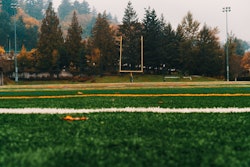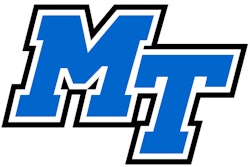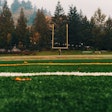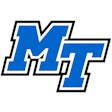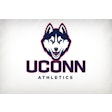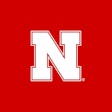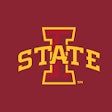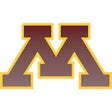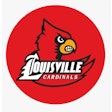Copyright 2017 Gannett Company, Inc.
All Rights Reserved
USA TODAY
During the 2015-16 school year, benefits for major-college athletes jolted upward in ways NCAA schools had seen as financially and philosophically ruinous less than a decade earlier.
The University of Arkansas athletics program barely blinked. It added about $1million in expenses to take advantage of a new NCAA rule that allowed scholarships to cover the full cost of attending college, according to information provided by the athletics department to USA TODAY Sports. Not including a $7million investment in a new sports nutrition center, it also again paid about $1.5million to feed athletes meals and snacks that NCAA rules had prohibited until April2014.
In other words, from those two items alone, Razorbacks athletes were pretty competitive with their coaches and administrators in terms of getting more from the school over the last two years.
And when the year was over, Arkansas had finished in the black by more than $19.3million — an operating surplus that was nearly $2.3million greater than the surplus it had produced in 2014-15.
As with other Southeastern Conference schools, Arkansas feasted on a substantial increase in TV rights revenue connected to the burgeoning SEC Network. Altogether, 22 other public school athletics programs — all in the SEC, BigTen or Big12 — finished their 2016 fiscal years having met the NCAA's bench mark for financial self-sufficiency, according to a USA TODAY Sports analysis of the athletics financial information schools annually report to the association.
An athletics program is deemed self-sufficient if the operating revenue it generates through its activities, including ticket sales, donations, TV rights and other income shared by conferences and the NCAA, exceeds operating expenses.
Arkansas' athletics program reached this point, effectively, without help from the school's general fund or student fees; it received $2million from the university but transferred an equal amount back in addition to what it paid for scholarships and various university services. Even with added spending on cost of attendance and additional meals and snacks, the total of 23 self-sufficient programs has remained steady since 2010. In 2016, Texas A&M's generated revenue of more than $194million — tops in Division I — exceeded its operating expenses by more than $57million. But its revenue and surplus amounts, driven by fundraising related to a football stadium refurbishment, came against the backdrop of $57million in football and other capital project spending.
Arkansas' surplus enabled the athletics department to spend more than $20.7 million during 2015-16 on capital projects. Among them were the installation of video boards at four facilities, the construction of parking lots that are used by the department on game days and by the university community otherwise, and the start-up costs for a $160million football stadium renovation.
Schools' spending on capital projects for athletics programs — money spent on top of day-to-day operating costs — was collected by the NCAA for the first time on reports for 2015-16. Of the $1.3billion in such spending, a combination of cash and debt financing, about two-thirds came from Power Five schools, which constitute less than one-fourth of DivisionI public schools.
"Substantial progress has been made in the past few years with NCAA legislation opening the door for programs like ours to invest even more into our student-athletes," Arkansas athletics director Jeff Long said in a statement to USA TODAY Sports. "Fully funding cost of attendance and providing additional meals and fueling for student-athletes in all sports on an annual basis is a significant financial commitment for all intercollegiate programs but one that was needed for the benefit of our student-athletes."
"Fortunately, the University of Arkansas, as one of the few financially self-sustaining athletics programs in the country, was in a good position to assume those costs for more than 460 student-athletes in 19 sports on top of the other commitments we have made to our student-athletes, including academic support, medical resources, enhanced travel and better facilities."
Where the money goes
Taken as a group, DivisionI public schools showed signs of being able to accommodate more spending on athletes — plus capital spending — without all of them having an Arkansas-like ability to overpower that increase with TV money. There were several operational areas in which schools raised their spending in 2016 but did so at lower rates than they had been recently. Among those areas were salaries for coaches and administrators.
The 230 schools' spending on financial aid for athletes grew by nearly 9% in 2016 — the largest single-year jump since 2010. The increase for 2016 includes rises in the traditional elements of athletics scholarships — tuition, fees, room and board — plus the additional amounts for incidental expenses that athletes were allowed to receive for the first time.
Coaches' compensation rose by 5% in 2016, the smallest rate of increase during the 11 years USA TODAY Sports has compiled the information. (The 2016 data are based on documents acquired in conjunction with the Sports Capital Journalism Program at Indiana University-Purdue University Indianapolis.)
Schools' compensation for administrative and support staff went up 4.7% in 2016, the lowest rate of increase since 2010, when it was 3.1%. Rates of increase in spending on travel, equipment, uniforms and supplies and game-day operations also were at their lowest since 2011.
Whether these lower rates of increase are a one-year anomaly produced by the sudden spike in financial aid spending remains to be seen.
For example, travel spending can be tricky, because schools have no control over fuel costs and schools are trying to sharpen their focus on making travel arrangements that result in as little lost class time as possible. In addition, increases in travel costs that resulted from the last round of conference realignments have settled.
Another potential factor is that the NCAA has changed the reporting form in each of the last two years, potentially resulting in some schools reallocating some of these expenses to different reporting categories.
Getting creative
Louisiana Tech athletics director Tommy McClelland said that athletics departments outside the Power Five conferences recognize they need to do what they can to increase revenue. Their universities — and in some cases state governments — are continuing to add to the amounts of money they give to athletics. But McClelland says it's also a matter of priorities, and he insists there is no sense of losing ground competitively, even though his school spent less on sports in 2016 than any other public school in ConferenceUSA, one of the so-called Group of Five conferences.
"The parity and the competitiveness on the field, on the court is, in my opinion, at an all-time high," he said. "I mean, we feel like we've been pretty competitive in the major sports at Louisiana Tech on an athletic department that's significantly less financially than the Power Fives — and is significantly less than many Group of Fives. ... So with that in mind, we will increase and do where we can within reason and what's responsible for us at our university."
Read More of Today's AB Headlines
Subscribe to Our Daily E-Newsletter
Terms and Conditions Privacy Policy

















